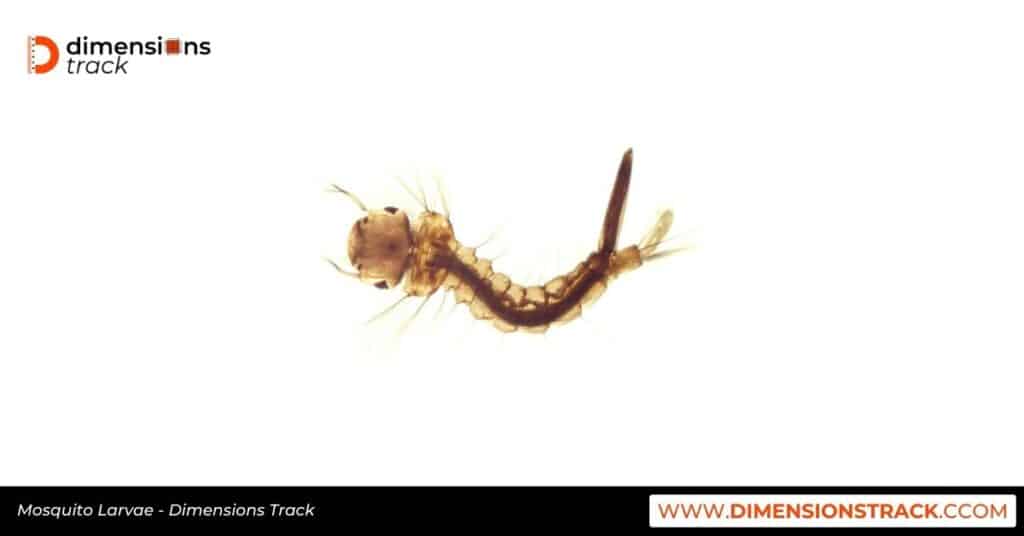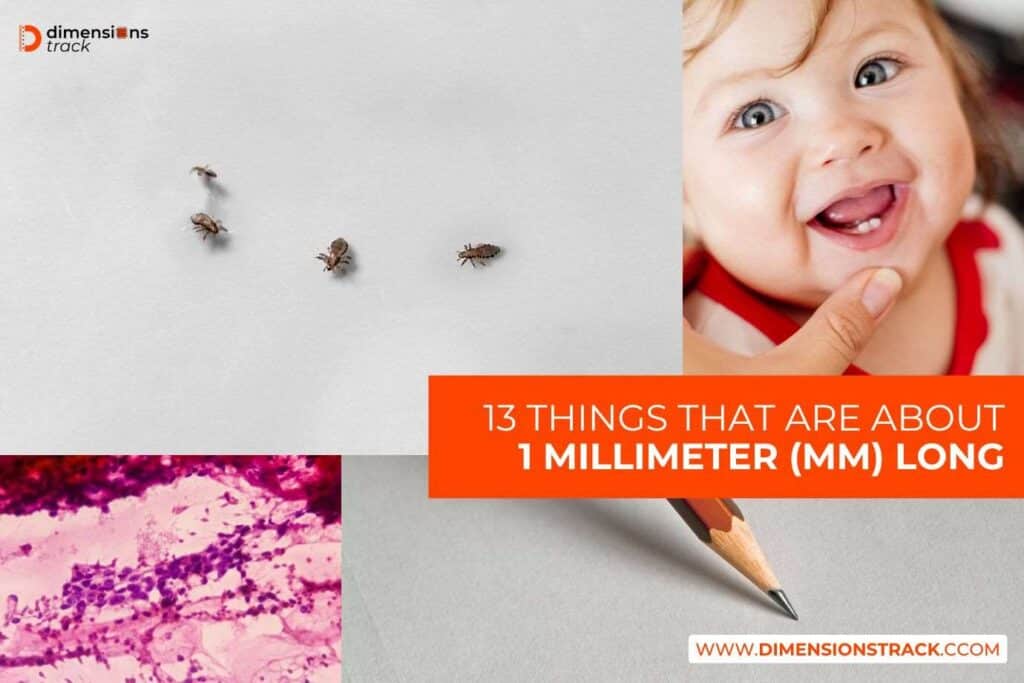Ever wondered about things that are 1 millimeter long? Let’s explore a fascinating world where tiny objects showcase nature’s intricate designs. From seeds to creatures, these minuscule wonders prove that size isn’t everything.
How to Visualize 1 Millimeter in Real Life
Wondering how long 1mm is? Grab a ruler and find its smallest marking. If you’re looking for things that are 1 millimeter long, think of the thickness of a credit card or the width of a paper clip wire. For comparison, you’d need to line up 25.4 millimeters to reach one inch.
“In nature, great things are accomplished by a collection of small things working together.” – Vincent van Gogh
1. The Tip of a Pencil

A freshly sharpened pencil tip measures exactly 1mm across. When writing, this tiny point creates lines about 0.3mm wide – that’s even smaller than the tip itself!
The size of your pencil tip affects everything about your writing experience. Too sharp, and it’ll snap under pressure. Too blunt, and your letters get messy.
Most people press three times harder than needed when writing. At 1mm, the tip maintains the perfect balance between precision and strength.
Your pencil wears down about 0.1mm with every 100 words you write. That means you’re slowly reshaping this tiny point as you work.
2. An Emerging Baby Tooth

When baby teeth first emerge, they’re barely visible at 1mm above the gum line. These tiny dental pioneers mark the start of a child’s eating journey.
Most parents spot these white specs around 6 months of age. They’re like miniature icebergs – what you see is just the beginning.
The tooth pushes through at a rate of about 1mm per month. That’s slower than your fingernails grow!
Some babies arrive with teeth already showing – these natal teeth start at exactly 1mm in length.
3. A Small Mustard Seed

Among things that are 1mm, mustard seeds pack impressive potential. These tiny spheres can grow into plants reaching six feet tall!
| Mustard Type | Size (mm) | Seeds Per Gram | Growth Speed |
|---|---|---|---|
| Yellow | 1.0 | 725 | Fast |
| Brown | 0.9 | 825 | Medium |
| Black | 1.1 | 650 | Slow |
Ancient texts mention these seeds as symbols of faith. Their growth from such a tiny start point amazed early observers.
Each seed contains enough energy and genetic information to create an entire plant. Nature’s efficiency at its finest!
These powerhouse pods can stay viable for up to four years when stored properly.
4. Head Lice

These parasitic insects measuring 1mm have been human companions throughout history. Despite their tiny size, they’ve influenced social behaviors for thousands of years.
A single head louse can move at speeds up to 23 centimeters per minute. That’s like a human running at highway speeds relative to body size!
Their eggs, called nits, attach to hair shafts with a natural super-glue substance. They’re perfectly adapted to their unique lifestyle.
These resilient creatures can hold their breath for up to 8 hours, making them surprisingly tough for something so small.
5. Dust Mites

Among the tiniest things that are 1 millimeter long, dust mites play a crucial role in our homes’ ecosystems. They’re nature’s microscopic housekeepers.
These invisible creatures can’t drink water directly. Instead, they absorb moisture from the air like tiny sponges.
A single dust mite can produce up to 20 waste particles per day. That’s impressive output for something barely visible!
Your bed likely hosts thousands of these microscopic roommates, helping break down dead skin cells we shed daily.
6. Seeds of an Orchid

Orchid seeds represent one of nature’s smallest marvels. At precisely 1mm, they’re so tiny they look like floating dust particles.
A single orchid pod can release millions of seeds. They’re among the lightest seeds in the plant kingdom.
These microscopic plant embryos travel on air currents for miles. Their design makes them perfect for wind dispersal.
Despite their tiny size, each seed carries complete genetic instructions for creating some of Earth’s most complex flowers.
7. Mosquito Larvae

When asking how long is 1mm, consider a newly hatched mosquito larva. These aquatic babies start their life at exactly this size.
| Growth Stage | Length (mm) | Daily Growth | Activity Level |
|---|---|---|---|
| First Stage | 1.0 | 0.5mm | Low |
| Second Stage | 2.0 | 0.7mm | Moderate |
| Third Stage | 3.5 | 1.0mm | High |
| Fourth Stage | 5.0 | 1.2mm | Very High |
These wigglers can move through water with surprising speed. They’re constantly searching for microscopic food particles.
In optimal conditions, these tiny swimmers develop into adults in just seven days. That’s rapid growth from their 1mm beginning!
8. A Tumor Mass

Early detection of tumors at 1mm can literally save lives. At this size, they’re just becoming visible on modern imaging equipment.
These tiny masses contain roughly 100,000 cells. That’s an entire city of cells in a space smaller than a grain of rice.
Scientists study cancer growth at this crucial size because it represents a turning point. This is when tumors start developing their own blood supply.
Regular screening can catch these growths when they’re just 1mm – the ideal time for treatment.
9. The Point of a Sewing Needle

The needle point measures exactly 1mm across at its ideal sharpness. This precision helps it slice through fabric without causing damage.
Modern manufacturing creates these sharp tips with incredible accuracy. Each point gets tested to ensure it meets the 1mm standard.
The finest sewing needles maintain their 1mm point through hundreds of uses. That’s remarkable durability for something so delicate.
Some specialty needles have points smaller than 1mm, but they’re too fragile for everyday use. The 1mm standard provides perfect balance.
10. Newly Sprouting Hair

Among things that are 1mm, a fresh hair sprout emerges from its follicle at this exact length. It’s a tiny triumph of biological engineering.
Each new hair shaft grows about 0.4mm per day after breaking through the skin. The initial 1mm emergence marks its first visible appearance.
Human scalps house about 100,000 follicles, each capable of producing these 1mm beginnings. That’s a lot of tiny growth happening at once!
The thickness of each new hair varies by person and location, but the initial emergence length stays consistently at 1mm.
11. A Single Leg of a Millipede

When considering how long is 1mm, a millipede’s leg provides a perfect example. Each tiny appendage measures exactly this length.
| Millipede Species | Leg Count | Leg Length | Movement Speed |
|---|---|---|---|
| Garden Millipede | 160 | 1.0mm | Slow |
| Giant Millipede | 400 | 1.2mm | Medium |
| Desert Millipede | 140 | 0.9mm | Fast |
| Cave Millipede | 200 | 1.1mm | Very Slow |
These legs work together in perfect synchronization. Each 1mm appendage plays its part in the creature’s fluid movement.
Despite their tiny size, these legs can support up to 100 times their own weight. That’s impressive engineering at a microscopic scale!
12. A Minuscule Bead

Craft beads at 1mm represent the smallest size that can be threaded by hand. They’re popular in intricate beadwork and micro-jewelry.
These tiny spheres require special tools and steady hands to work with. Each one could fit inside the period at the end of this sentence.
Professional beaders use magnifying glasses to work with these miniature ornaments. They’re among the smallest decorative items humans regularly handle.
A single gram contains about 750 of these tiny beads. That’s a lot of potential for creative expression in a very small space!
13. A Single Grain of Sand

The smallest sand grains are among the things that are 1 millimeter long, marking the boundary between sand and silt. These tiny particles have played a crucial role in shaping our planet’s geology.
These 1mm granules can travel thousands of miles on ocean currents. Each one is a tiny traveler on a global journey.
Wind-blown sand at this size creates the most perfect dunes. These particles are just right for catching the breeze.
A handful of beach sand contains thousands of these 1mm pieces, each with its own mineral composition and history.
Conclusion
From nature’s tiniest seeds to human-made precision points, things that are 1 millimeter long surround us everywhere. They remind us that size doesn’t determine importance. Whether you’re examining a sprouting seed or threading a micro-bead, these small wonders demonstrate nature’s and humanity’s incredible attention to detail at the smallest scales.
Remember, next time you see a ruler’s smallest mark, you’re looking at a measurement that connects countless tiny marvels in our world. It’s amazing how much life and complexity exists in just one millimeter!








